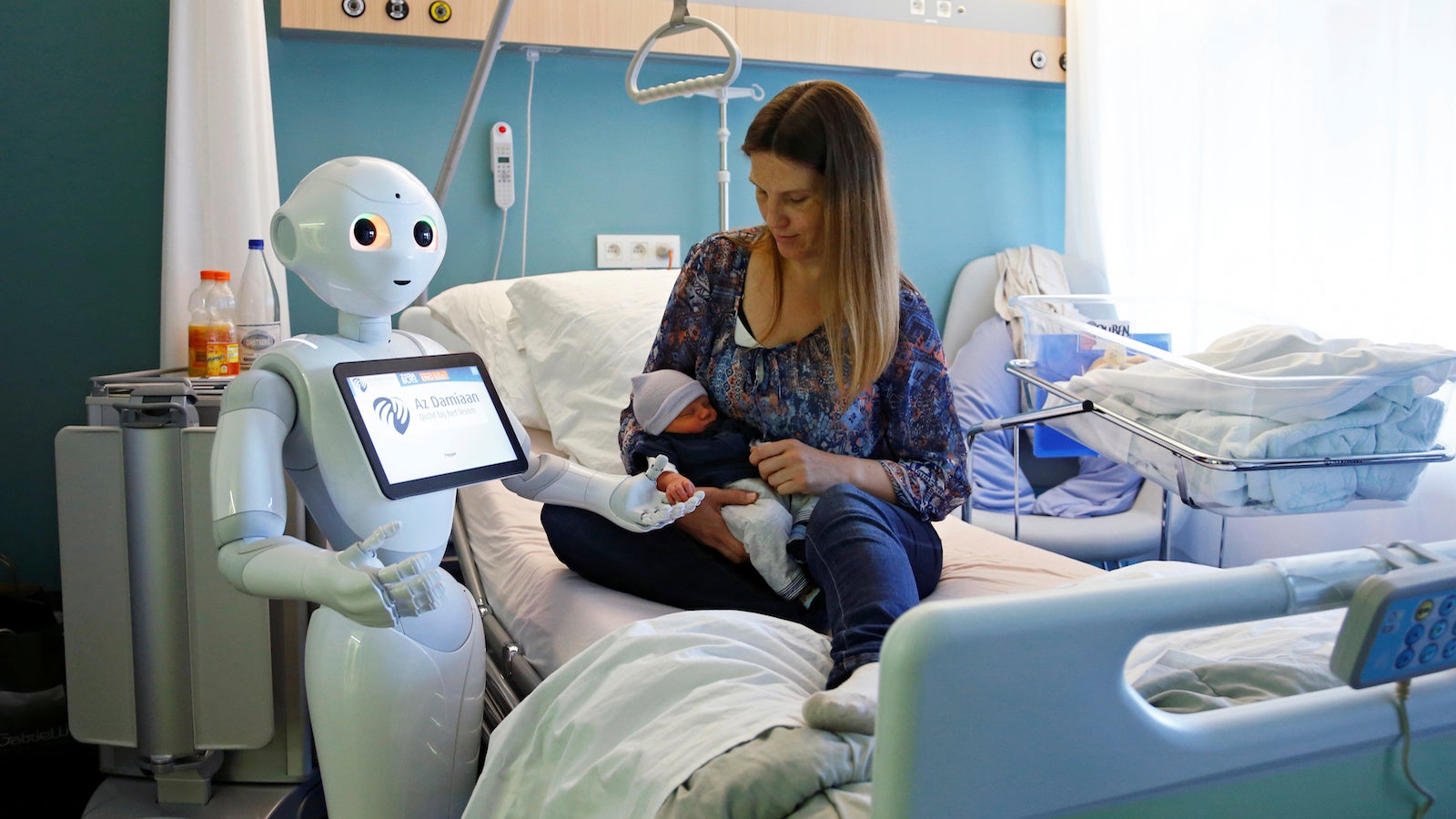A glimpse into the dystopian future of technology-centered parenting
Our children are turning into cyborgs. Well, sort of.


Our children are turning into cyborgs. Well, sort of.
As a futurist, I predict that it won’t be long before nearly all children will wear a small device that blinks and chirps on their wrist. Behind its screen sits not only their health data, but also the cumulative data from several hundred million people. This system will have grown with the individual through childhood and into adulthood. It will know their likes, dislikes, weaknesses, and rhythms in ways even they don’t understand. It will use this data to offer a series of suggestions: Drink some water, take a nap, rest, run, work.
And work they will—but much more efficiently, and therefore much less. Our kids’ kids will better manage their bodies in ways that will have a marked effect on their lives. And all this will begin in the nursery.
There is already a good deal of blinking, chirping technology available to new parents: contactless thermometers, video live-stream, movement sensors. As we have a propensity to turn to technology to ease our anxieties, this connectivity continues throughout childhood into adulthood: a baby monitor for new parents, a phone for a teenager, a LinkedIn account as you leave college.
Things are getting even more geeky thanks to the Internet of Things—everyday items that have the ability to send data to each other, receive it, and transfer the information over to us. We already have thermostats that check the weather, doorbells that detect when somebody is on your porch, and lights that change color depending on the music you play, so we can only expect this technology to also become ubiquitous in the nursery. Why not video monitors that also measure your baby’s heartbeat, changing mats that also measure the baby’s weight and height, or electromagnetic-induction-powered diapers that analyze their contents?
A river of data will flow from these devices to be collected, counted, analyzed, and returned to you, translated as a phone notification. It is not a huge leap to imagine automated messages about how much your baby is crying—but what about feedback on her daily crying-hour average, the national crying-hour average, and therefore a report on whether a visit to the pediatrician might be in order?
This data won’t be isolated. It will be cross-referenced against the parents’ 23andMe genomics and their Apple Watch lifestyle profiles. It will be anonymized and cross-referenced again against local, national, and global data. Algorithms will comb through the tangle looking for patterns about what makes a healthy baby, and then suggest how we can make even healthier babies, either through our own actions or further application of technology. There are obvious dangers to these kinds of developments. Knowing your kids will be profiled from birth and your insurance premiums altered accordingly brings us closer to a kind of back-door eugenics in which you are trying to predict the lifetime cost of a child before they are born.
It’s also reasonable to be concerned about how such technology might affect our parenting—whether it would quell or amplify our anxiety. What if the helicopter in helicopter parenting is actually an omnipresent drone? And then—what if you only lease that drone?
After all, it is unlikely you will outright own either your nursery hardware or the data it produces. If we gave up a little privacy for Gmail’s better email service, we would surely give up a little bit more for healthier kids. Different health insurers and their partners will offer competing health-care packages and nursery-technology packs will be sold on precision and cost. But the corporate goal will be creating systems that lock you and your baby into a contract for longer and longer periods, ideally for life. In fact, the data sets will be so complex that a second tier of companies will emerge that specialize in the complex and costly process of converting families’ data from one provider to another.
A longer-term societal problem will be simply who does and does not have access to this technology. Increasingly it seems that wealth, health, and technology are inextricably linked. So as a portion of society sees their kids’ health improve, what happens to those who don’t have access to this technology?
Moreover, as we have seen with the recent Tesla Autopilot crashes and the ensuing outrage, most of society expects technology to be immediately perfect, and small incidents can cause us to question the whole enterprise. Each time a device manufacturer is proven to have exaggerated a product’s capabilities, we become a little more wary. The first time there is a significant data breach with our kids’ health stats, we will ask how the insurer could let this happen—and everyone will lose their minds when we’re 10 years in and a miscalibrated algorithm is retrospectively blamed for missing hundreds of preventable infant deaths.
All technology comes with trade-offs. Our grandkids may leave home as quasi-cyborgs, but this won’t be because of a chip implanted in their head—it’ll be because they have a newfound technical mastery over their own body and minds. But older generations will have to decide whether this power is worth the cost.